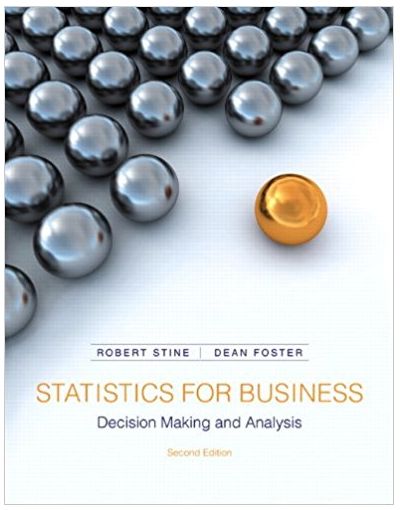This exercise considers monthly prices of shares in JC Penney from January 2000 through the end of
Question:
(a) Fit a polynomial trend model to the time series of prices. Try polynomials of various degrees (i.e., try polynomials with t, t2, and other powers up to t6). Do any of these, with orders of 6 or less, capture the ups and downs of the prices?
(b) Compare the ability of a polynomial trend to follow the pattern in this time series to that of two exponentially weighted moving averages (with w = 0.5 and w = 0.9).
(c) Fit an auto regression to the time series of prices, using three lags of the price (yt -1, yt -2, and yt -3). Are all of these lagged predictors useful? Remove predictors that do not significantly improve the fit of the model and summarize your final model. (There’s a lot of collinearity among these predictors, so remove predictors one at a time.)
(d) Does the model you created in part (c) meet the conditions for the MRM?
(e) The data table includes the returns on Sears stock during this period. [Returns are the ratio of the change in price to the price in the earlier period, (price t – price t -1) / price t -1.] Does the sequence of returns appear simple, or do you find a pattern that can be used to forecast future returns?
(f) Compare using the model in part (c) for forecasting the price of this stock in the next month to a method that uses the simplicity of the returns. Which would you prefer to use (if either)? Explain your choice.
Fantastic news! We've Found the answer you've been seeking!
Step by Step Answer:
Related Book For 

Statistics For Business Decision Making And Analysis
ISBN: 9780321890269
2nd Edition
Authors: Robert Stine, Dean Foster
Question Posted:





